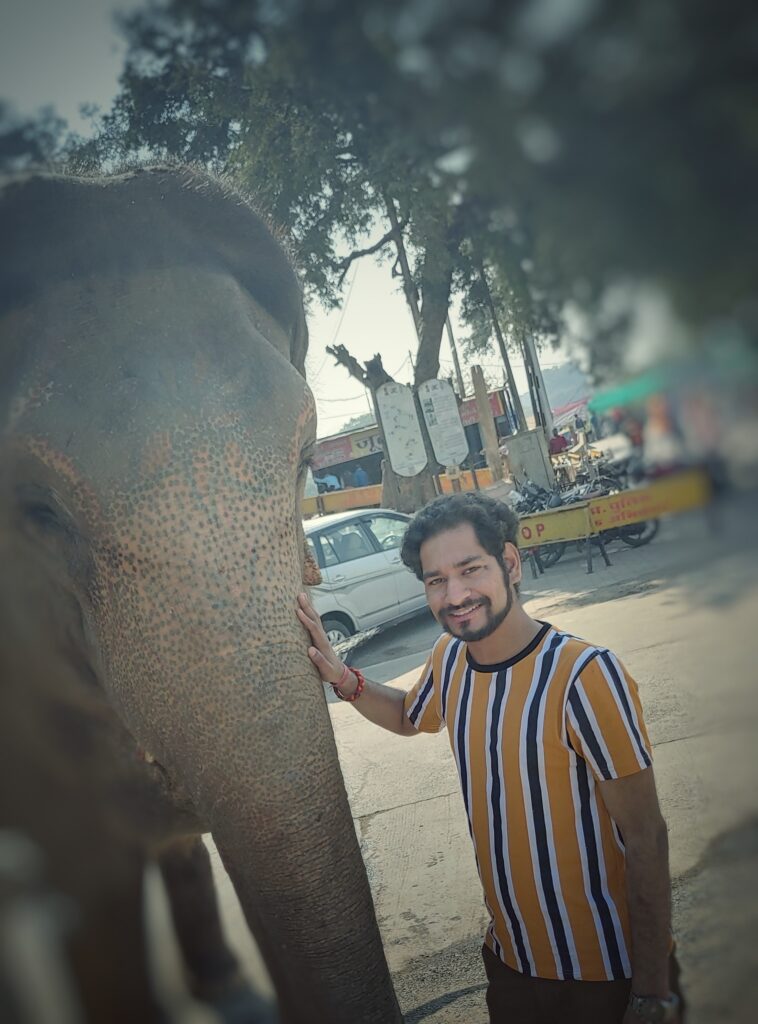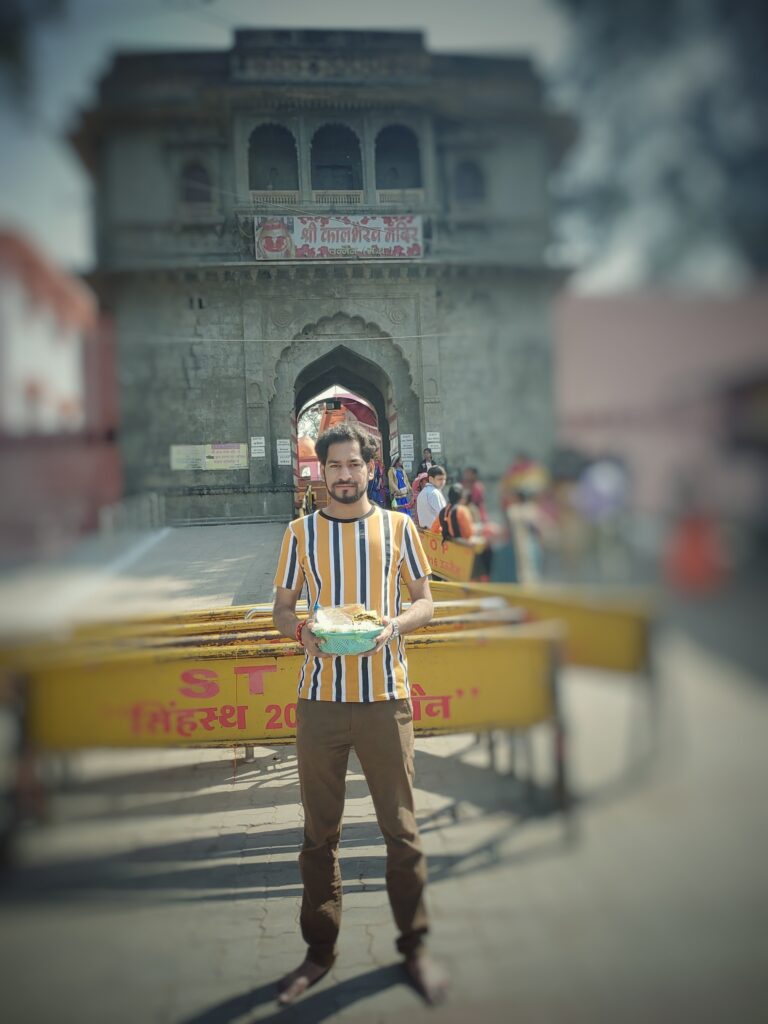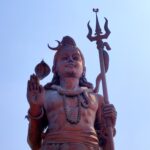Ujjain, one of India’s oldest cities, stands as a testament to its rich spiritual heritage and architectural marvels. Situated on the banks of the Shipra River in Madhya Pradesh, Ujjain is often called the “City of Temples” for its abundant spiritual landmarks. Each temple here narrates a story rooted in Indian mythology, history, and faith, making Ujjain an unparalleled destination for pilgrims and spiritual travelers.
During my recent visit to Ujjain, I immersed myself in the essence of its sacred ambiance, exploring every iconic temple and uncovering their fascinating pasts and present-day significance. Here’s a detailed account of my journey:
1. Mahakaleshwar Temple
The Abode of Lord Shiva
Mahakaleshwar Temple, dedicated to Lord Shiva, is one of the twelve Jyotirlingas and the spiritual heart of Ujjain. The temple is known for its unique rituals, especially the Bhasma Aarti, which draws thousands of devotees from across the world.
History: According to mythology, the temple was built by King Chandrasen, a devotee of Lord Shiva, with the assistance of divine beings. Its current structure reflects Maratha architecture, with significant contributions from Ranoji Shinde.
Today: The temple is known for the Bhasma Aarti, a spiritually uplifting ceremony performed every morning.
Bhasma Aarti: The Sacred Ritual of Mahakaleshwar Temple
One of the most spiritually significant rituals in Ujjain is the Bhasma Aarti, performed at Mahakaleshwar Temple in the early hours of the morning. This unique ritual involves offering sacred ash (bhasma) to Lord Shiva and is believed to represent the cycle of life and death, reminding devotees of life’s impermanence.
Why It’s Special:
The Bhasma signifies ultimate reality and the union of body and soul.It is an ancient tradition, and though cremation ashes were used historically, the temple now uses ashes made from dried cow dung for the ritual. The ritual creates a spiritually charged atmosphere, rejuvenating the divine energies of the temple.
How to Book:
To attend, you need to reserve a slot:
Visit the official Mahakaleshwar Temple website for Bhasma Aarti online booking: https://shrimahakaleshwar.com/
You can also book offline by visiting the temple’s office a day prior.
Tips for Attending:
Follow the dress code: Traditional attire is mandatory (dhoti for men and saree for women).
Arrive early to avoid missing the start of the ceremony.
Remember, cameras and phones are prohibited during the ritual.

2. Kal Bhairav Temple
Guardian Deity of Ujjain
Kal Bhairav Temple is dedicated to Kal Bhairav, an incarnation of Lord Shiva known as the protector of Ujjain. The temple is famous for its unique tradition of offering liquor to the deity.
History: Constructed during the Parmar dynasty, this temple holds immense significance as it is linked to the Tantric tradition. Kal Bhairav is believed to protect the city from evil forces.
Today: Devotees bring bottles of liquor as offerings, which priests offer to the deity in a ritual unique to this temple.
3. Harsiddhi Temple
The Goddess of Strength and Energy
The Harsiddhi Temple, devoted to Goddess Durga, is one of the 51 Shakti Peethas and a major pilgrimage site in Ujjain.
History: It gained prominence during the Maratha reign, with significant contributions by Rani Ahilyabai Holkar. The Shakti Peetha legend states that Sati’s elbow fell here.
Today: The temple’s Deep Stambhs (light towers) are illuminated during Navratri, creating a breathtaking view that attracts thousands.
4. Chintaman Ganesh Temple
The Ancient Temple of Lord Ganesha
Located on the banks of the Shipra River, this temple is believed to house a self-manifested idol of Lord Ganesha and is renowned for alleviating the worries (Chinta) of devotees.
History: Built during the Paramara dynasty, it is considered one of the oldest Ganesh temples in Ujjain.
Today: The temple is packed with devotees, especially during Ganesh Chaturthi.
5. Ram Ghat and Sandipani Ashram
Mythological Significance
While not a temple, Ram Ghat is a significant location for ritualistic bathing and the Kumbh Mela, held every 12 years. Nearby, Sandipani Ashram is where Lord Krishna, Sudama, and Balram received their education under Guru Sandipani.
History: Ram Ghat is a center of devotion, with roots going back to the Mahabharata era.
Today: The serene environment at the ghat and ashram offers a tranquil retreat for meditation.
6. Mangalnath Temple
Birthplace of Mars (Mangal)
This temple is dedicated to the planet Mars (Mangal) and attracts devotees seeking relief from astrological disturbances.
History: Mentioned in the Matsya Purana, this temple is a must-visit for devotees of Hindu astrology.
Today: Tuesday rituals bring large crowds, and the temple’s location on the Shipra River adds to its beauty.
7. Gadkalika Temple
Goddess Kali’s Divine Form
The Gadkalika Temple is associated with Kalidasa, the renowned Sanskrit poet, who is believed to have received divine blessings here.
History: Dating back to ancient times, it was renovated by Emperor Harshavardhan.
Today: It becomes a hub of devotion and energy, especially during Kali puja festivals.
Ujjain Today: A Blend of Tradition and Modernity
Ujjain is deeply rooted in spirituality but caters to modern travelers with well-developed infrastructure, including hotels, transport, and vibrant local markets offering souvenirs and traditional items.
Best Time to Visit: Plan your visit during Mahashivratri or Kumbh Mela for a vibrant experience.
Travel Tips:
Respect local customs and follow temple etiquette. Wear comfortable clothing and footwear suitable for walking.
Conclusion
My visit to Ujjain was a spiritually enriching journey. From the mystical Bhasma Aarti at Mahakaleshwar Temple to the tranquil vibes of Ram Ghat, every experience was unique and unforgettable. Ujjain, with its blend of ancient traditions and modern amenities, truly lives up to its title as the spiritual capital of India.
If you are seeking a deeper connection with history, culture, and spirituality, Ujjain temples should be at the top of your travel list.



